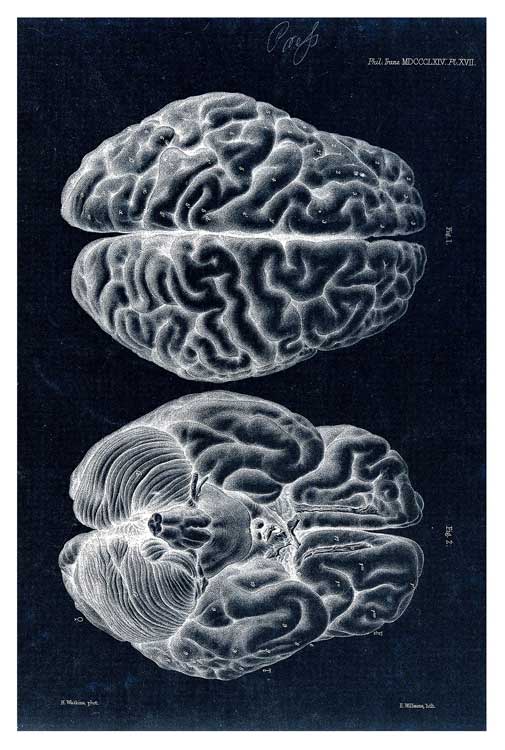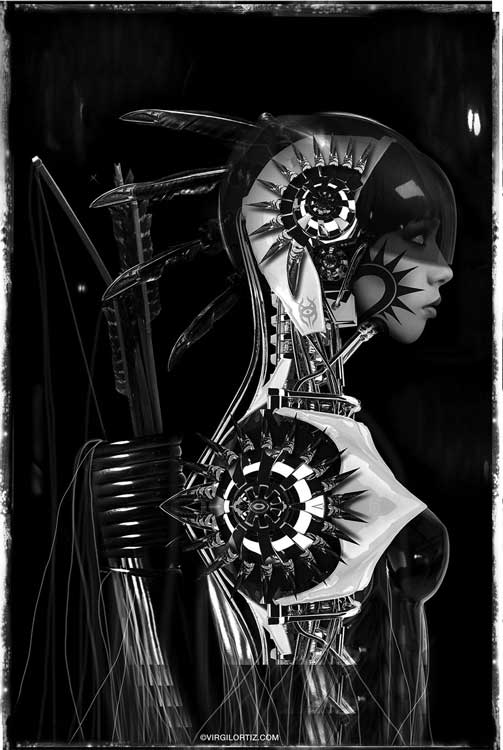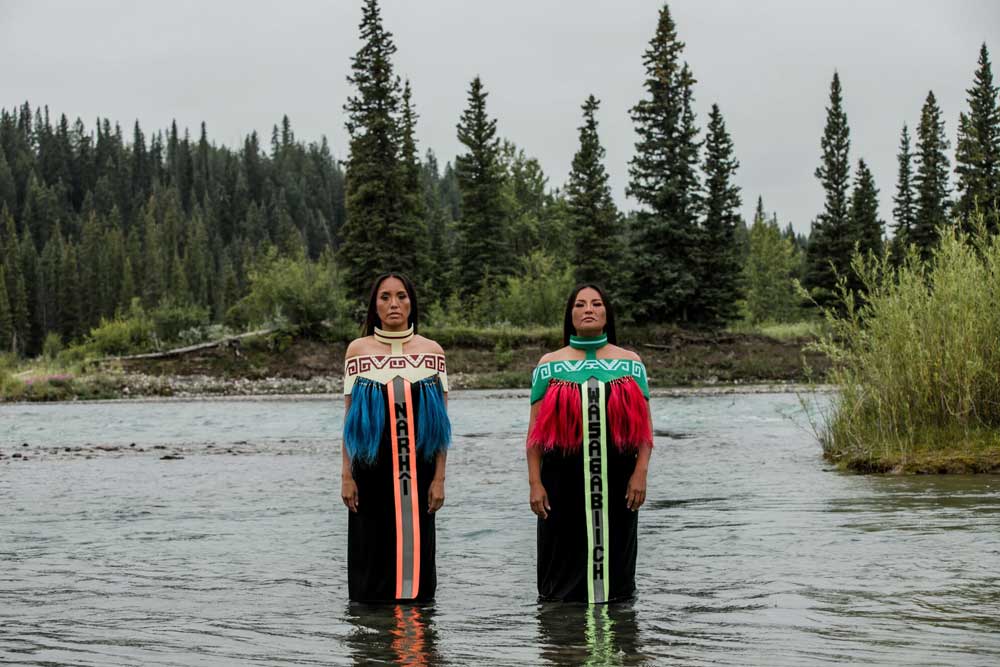F.4 Sovereign Territorialities: Unperforming the Colonial in Institutions, the Land and the Settler Imaginary, Part 1
Sat Oct 17 / 9:00 – 10:30
voice_chat expiredchairs /
- Leah Decter, York University
- Rachelle Dickenson, Independent Curator, NSCAD University
- Peter Morin, OCAD University
This two-part session invites BIPOC and White Settler scholars, artists and curators into dialogue concerning the ways artistic production interjects disturbance into contemporary colonial landscapes transnationally. A geography of colonial ideology overlays all aspects of contemporary life in nations and bodies impacted by settler colonialism. This extends from normative conceptions of place and identity within the settler society to the calcified institutional administrative cultures that shape engagement with, and the production of, knowledge. The arts and cultural sector has been complicit in establishing and maintaining dominant imaginaries and structures that sustain these sometimes painful ideological landscapes. Simultaneously, cultural workers are often instrumental in subverting them. Through a discussion of specific artworks, the roundtable participants will consider how artistic interventions mobilize “radical defamiliarization” (States 2010, 35) as a strategy for disturbing colonial whiteness and asserting unremitting Indigenous sovereignties in the land, the gallery and iconic national sites.
Leah Decter is a white settler inter-media and performance artist and scholar based in Winnipeg, Canada; Treaty 1 territory. Holding a PhD in Cultural Studies from Queens University and an MFA in New Media from Transart Institute she is currently a SSHRC Postdoctoral Fellow at York University’s School of Arts, Media, Performance and Design/Sensorium Centre for Digital Arts and Technology. Decter’s artwork has been presented widely in Canada and internationally US, UK, Germany, Malta, Netherlands, India, and Australia. Her writing has been published in the Journal of Critical Race Inquiry, The Land We Are: Artists and Writers Unsettle the Politics of Reconciliation, Canadian Theatre Review and Liminalities: A Journal of Performance Studies, among other publications. Decter’s upcoming publications include a co-edited issue of Public Journal and several book chapters. Her current research-creation projects address social-spatial politics consequent to settler colonial formation and consider the ethics of being- in-relation in spaces of Indigenous sovereignty.
Rachelle Dickenson, PhD is of British, Irish, and Red River Métis ancestry through her paternal grandfather. Having learned about her Métis ancestry as an adult, she is guided by decolonial and Indigenous methodologies and the arts and academic communities of which she is a part. Rachelle is an independent curator and recently completed her PhD at Carleton University in the School of Indigenous and Canadian Studies. She worked as Associate Curator with the National Gallery of Canada’s Indigenous Art Department and is co-curator of Àbadakone | Continuous Fire | Feu Continuel (2019-20). Rachelle’s research and practice focus on relationships and distinctions between BIPOC and white settler art histories, pedagogies, and curatorial practices in Canadian exhibition and educational institutions in support of generative decolonizing and anti-racist arts collaborations.
Peter Morin is a Tahltan Nation Performance Artist, Educator, and Curator. Morin’s artworks are shaped, and reshaped by Tahltan epistemological production and often take on the form of performance interventions. Morin’s practice has spanned twenty years so far, with exhibitions in London, Berlin, Singapore, and New Zealand, as well as across Canada and the United States. In addition to his exhibition history, Morin has curated exhibitions for the Museum of Anthropology, Western Front, Bill Reid Gallery, and Burnaby Art Gallery. He was longlisted for the Brink and Sobey Awards in 2013 and 2014, respectively. In 2016, Morin received the Hnatyshyn Foundation Award for Outstanding Achievement by a Canadian Mid-Career Artist. Morin holds a SSHRC grant, Crossing Media, Crossing Canada: performing the land we are, which explores the meeting up of media and durational performance. Morin is an Associate professor with the Faculty of Art, at the Ontario College of Art and Design University in Toronto.

Brain of an African Bushwoman two figures, views from above and below. Lithograph by E.M. Williams after H. Watkins, 1864. Courtesy of Deanna Bowen.
F.4.1 Deanna Bowen: Notes from The Gods of Gods: Berlin, Berlin and Black Drones in the Hive
Deanna Bowen, Concordia University
My presentation involves self-reflection and presentation of two interdependent exhibitions presented at the 2020 Berlin Biennale and the Kitchener Waterloo Art Gallery September 18 – February 28, 2021. Respectively, The God of Gods: Berlin, Berlin and Black Drones in the Hive extend critical interventionist research of the White nationalist ambitions that inform Canada’s cultural history and national narrative. Specifically, The God of Gods: Berlin, Berlin is an off-site companion work to Black Drones in the Hive that examines the history of Berlin, Ontario (now Kitchener) and Berlin, Germany during WWI as a means to reveal the familial, geographic, cultural, and colonial entanglements between the British Commonwealth, Germany, Canada, the United States, and Africa from the mid 1700s. Black Drones is a solo exhibition that looks at the regional histories surrounding the Kitchener Waterloo Art Gallery and greater Southern Ontario. The project looks at Six Nations history and the terms of the Haldimand Proclamation of 1784, which refers to Quebec’s Governor Sir Frederick Haldimand granting a tract of land to Mohawk Chief Thayendanegea’s (Joseph Brant) and the Haudenosaunee (Iroquois) for their alliance with the British during the American Revolution 1765-83. Accordingly, the American Revolution provides an opportunity to then reflect on a long, traumatic history of prolonged conflict that continues in the War of 1812-15, the US Civil War (1861-65), the Boer War (1899-1902), and World War I (1914-1918). Black Drones... is also an investigative process of production that works to excavate Black presence and erasure. Archival documents from the mid 1700s attest to African-American slave presence in both British and Six Nations communities. Other materials reveal a robust black presence in the region, with a population of 60,000 in 1900. The quandary of this growth is its extraordinary decline to 18,000 by 1920 and so my research digs deeper into regional Ontario history to trace the ways that this decline is commingle with local, national and global preoccupations with Eugenics and population control.
Deanna Bowen (b. 1969, Oakland; lives in Toronto) is a descendant of two Alabama and Kentucky born Black Prairie pioneer families from Amber Valley and Campsie, Alberta. Bowen’s family history has been the central pivot of her auto-ethnographic interdisciplinary works since the early 1990s. She makes use of a repertoire of artistic gestures in order to define the Black body and trace its presence and movement in place and time. In recent years, her work has involved close examination of her family’s migration and their connections to Vancouver’s Hogan’s Alley and Black Strathcona, the “All-Black” towns of Oklahoma, the Kansas Exoduster migrations and the Ku Klux Klan in Canada and the US. She is a recipient of a 2020 Governor General Award for Visual and Media Arts Award, a 2018 Canada Council Research and Creation Grant, an Ontario Arts Council Media Arts Grant in 2017, a 2016 John Simon Guggenheim Memorial Foundation Fellowship, and the 2014 William H. Johnson Prize. Her writing, interviews and artworks have been published in Canadian Art, The Capilano Review, The Black Prairie Archives, and Transition Magazine. Bowen is editor of the 2019 publication Other Places: Reflections on Media Arts in Canada.

Virgil Ortiz, Tahu 2180_ Revolt Series, 2015, Archival Print on FujiCrystal Paper, Luster printed with Ultra Chrome Ink, ©VirgilOrtiz.com.
F.4.2 Virgil Ortiz and the Reimagining of Sci-Fi Futurities
Nicole Neidhardt, OCAD University
My presentation will introduce the work of Cochiti Pueblo artist, Virgil Ortiz and his Revolt 1680/2180 series. This series of work powerfully subverts, questions, and reclaims histories in what is now known as the southwest United States. Within the realm of Indigenous Futurisms, Ortiz is able to “radically defamiliarize” viewers with colonial histories that shape our current lived realities as Indigenous peoples. Oritiz’s work engages in sci-fi tropes while simultaneously critiquing historical notions of what sci-fi is. Sci-fi has long been a roadmap for colonial futures. It has shaped the aesthetic of the future and in doing so has contributed to a dominant settler imaginary that thrives on exploration, extraction, violence, and displacement. Through a critical analysis of Virgil Ortiz’s work we can see how he disrupts western colonial notions of futurities and reasserts Indigenous sovereignty, connection to land, and relationality. This disruption, and reimagining of possible futures resists dominant narratives and offers alternative pathways to collective futures and present realities. Indigenous Futurisms has the ability to call into motion the worlds of Indigenous ancestors before colonial contact and project this abundance without adversity into our present, and into possible futures.
Nicole Neidhardt is Diné (Navajo) of Kiiyaa'áanii Clan on her mother’s side, a blend of European ancestry on her father’s side and is from Santa Fe, NM. She has a BFA from the University of Victoria and is currently working on her MFA at OCAD University in Toronto, ON. Nicole’s Diné identity is the heart of her practice which encompasses installation, illustration, painting, and large-scale murals. Her research interests revolve around Indigenous Futurisms, Diné stories and storytelling, Resurgence, and Decolonial Aesthetics.
F.4.3 Embodying Treaty: Lorraine Albert’s Steps Forward
Carla Taunton, NSCAD University
I propose to introduce the installation Steps Forward (2017) by white-settler artist Lorraine Albert. This work is a site-specific intervention which exemplifies ‘radical defamiliarization’ in that it aims to interrupt the experience of walkers visiting the iconic Skyline trail in Cape Breton Highlands National Park. This project, grounded in critical settler methodologies, aims to actively assert Mi’kmaw sovereignty and remembrance of treaty protocols by featuring 35 plates of brass metal on the 35 steps of the trail that were laser-etched with original text from the Treaties of Peace and Friendship signed in 1752 between the Mi’kmaw Nation and the British Crown. Albert’s installation exposes the erasure of Mi’kmaw land sovereignty in the national park. It also challenges settler imaginary of wilderness and settler possession of land by marking the trail with treaty text serving as evidence of unsurrendered Indigenous territory. These treaties were meant to establish protocols of co-existence and shared accountabilities grounded in Mi’kmaw epistemologies and ontologies. I will situate Albert’s Steps Forward as a critical settler decolonial strategy of what I call “embodying treaty” – a methodology that invites settlers to be accountable to treaty responsibilities as guests on sovereign Indigenous territories and that is responsive to and non-cooptive of local land based and cultural knowledges.
Dr. Carla Taunton, a white-settler scholar, is an Associate Professor in the Division of Art History and Contemporary Culture at the Nova Scotia College of Art and Design University (NSCAD) and the Special Advisor to the VP Academic and Research, Social Justice and Decolonization. Her research contributes to arts-based critiques of settler colonialism, Indigenous arts and methodologies, contemporary Canadian art and activism, museum and curatorial studies, as well as theories of decolonization, anti-colonialism and settler responsibility. Her recent publications include, Unsettling Canadian Heritage: Decolonial Aesthetics in Canadian Video and Performance Art, with Sarah E.K Smith in Journal Canadian Studies (2018), Embodying Sovereignty: Indigenous Women’s Performance Art in Canada, in Narratives Unfolding (2017), and Performing Sovereignty: Forces to be Reckoned With in More Caught in the Act: An Anthology of Performance Art by Canadian Women (2016). She co-edited with Dr. Julie Nagam and Dr. Heather Igloliorte PUBLIC 54: Indigenous Art, the first special issue on global Indigenous new media and digital arts, and with Igloliorte RACAR: Continuities Between Eras: Indigenous Arts (2017). She is an independent curator and was a curatorial team member for Àbadakone | Continuous Fire | Feu Continuel at the National Gallery of Canada (2019). Taunton’s recent collaborative research projects include: The GLAM Collective, The Pilimmaksarniq/Pijariuqsarniq Project: Inuit Futures in Arts Leadership and The Archive/Counter-Archive: Activating Canada’s Moving Image Heritage.

Warriors of the Rocks by Catherine Blackburn. Photo by Tenille Campbell. Image courtesy of Catherine Blackburn.
F.4.4 Dressing Indigenous Sovereignty: A Critical Analysis on Dismantling Whiteness within Fashion Studies
Justine Woods, OCAD University
Fashion as an ideology, as an industry and as a space of study is itself an Institution. It is a constructed colonial landscape that spans the earth’s edges on a global scale. This conversation will enable space for a critical analysis on the need to center Indigenous ways of knowing in relationship to Land within Fashion Studies to subvert and disrupt colonial ideologies and narratives that have continuously controlled Indigenous bodies and identities. Acknowledging the discourse of whiteness within Fashion Studies, this critical analysis will inform new thinking on how Indigenous Fashion promotes the mobilization of Indigenous bodies, Land sovereignty and cultural resurgence through methods of design and dress. Direct examples of garment-based works by Indigenous designers will be used and analyzed to support this research, thinking and conversation. This critical analysis will enable a space of representation and assertion of Indigenous sovereignty within Fashion and will aid in dismantling Fashion as a constructed ideology purely associated with Western culture.
Justine Woods is a Métis interdisciplinary designer based in Tkaronto, originally from the Georgian Bay Métis Community. She is a current Master of Design Candidate at OCAD University and holds a Bachelor of Design in Fashion Design from Ryerson University. Justine's design practice involves garment-based and textile-based work with focus on Indigenous clothing adornment practices. Her research and design work investigates the ways Fashion can facilitate cultural resurgence, specifically positioned through an Indigenous feminist lens. Her work is greatly informed by her identity as a Métis woman, her ancestral kinship relations and the deeply rooted relationships she has to her ancestral land and the waterways of Georgian Bay.



